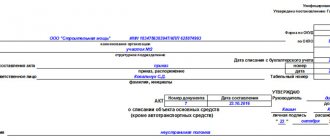In accordance with paragraph 1 of Article 395 of the Civil Code of the Russian Federation, in cases of unlawful withholding of funds, evasion of their return, or other delay in their payment, interest on the amount of the debt is subject to payment. The amount of interest is determined by the key rate of the Bank of Russia in force during the relevant periods. These rules apply unless a different interest rate is established by law or agreement.
In paragraph 39 of the Resolution of the Plenum of the Supreme Court of the Russian Federation dated March 24, 2016 N 7, it is stated that “unless a different amount of interest is established by law or agreement, the amount of interest for the use of other people’s funds accrued for periods of delay that occurred after July 31, 2020, determined on the basis of the key rate of the Bank of Russia in force during the relevant periods.”
How is the amount of interest determined under Art. 395 of the Civil Code of the Russian Federation in other periods of time? See Article 395 of the Civil Code of the Russian Federation with comments.
How to calculate interest under art. 395 of the Civil Code of the Russian Federation? First and last day of delay
The key rate is determined in each specific case depending on the period of delay. The key rate for some periods is given below.
As a general rule, the period for calculating interest is indicated as follows: the first day is considered the first day of delay, the last is the day of actual payment of the debt. For example, he was supposed to pay no later than the 15th, but paid on the 25th. The first day of delay (interest begins to accrue) is the 16th. The last day of delay is the 25th (the number of days of delay is 10 days).
What is using someone else's money?
In modern business conditions, a situation often arises when other people's assets, especially cash, are used unlawfully. These are cases such as:
- Delay in payment of accounts receivable.
- Late repayment of loans and credits.
- Unlawful withholding of overpaid or erroneously paid amounts.
The Civil Code (Civil Code) regulates the use of other people's funds in Article 395. According to this article, it is necessary to pay interest for the unlawful use of third-party resources, since late payment deprives the party that provided the assets of the opportunity to extract income from them, if they were returned on time.
The specificity of funds is that when they are in circulation, they certainly give an increase, regardless of how the owner uses them. Even if they are simply placed in a bank, they will already give interest. Therefore, it would be logical to assume that the refund should always be in a larger amount. The only exceptions are contracts in which the condition of free use is specified in advance.
To make the calculation, you need to clarify several important points: clearly establish the time interval for which the penalty will be accrued, that is, the date from which the accrual begins and the date of completion of the accrual process, the interest rate and the calculation procedure.
Formula for calculating interest under Art. 395 Civil Code of the Russian Federation
The formula for calculating interest for the use of other people's funds is as follows:
Amount of interest collected = Amount of debt x Key rate of the Bank of Russia valid during the period of delay / Number of days in a year (365 or 366) x Number of days of delay.
What number of days should I include in the formula: 365 or 366? This depends on whether interest is calculated during a leap year (366 days) or not (365 days).
For example, leap years are 2020, 2020, 2024.
When is it impossible to collect interest?
In practice, there are 3 cases when collecting interest from a defaulter is impossible. Firstly, this is an exchange of property, not money. In accordance with civil law, payment for the use of someone else's property is not charged even if its nominal value is known.
Secondly, if the amount under the contract was not intended for payment. Exemption from interest is possible if the person who violated the contractual relationship objectively could not use the creditor’s money. For example: the transfer of money is the responsibility of the carrier who did not hand it over on time, etc.
This also includes untimely processing of a payment order for the transfer of money to the creditor by the bank servicing the debtor. This is possible in case of technical failures or lack of money in the business entity’s current account in the required amount.
Thus, civil law protects the rights of the creditor and allows the defaulter to be punished. It does not matter whether the first party suffered losses due to late receipt of its own funds. The methodology discussed above will be applied in 2017.
Available loan options for the unemployed
The practice of lending to pensioners in Russia
Related Posts
An example of calculating interest under Article 395 of the Civil Code of the Russian Federation
Debt can arise, for example, under a loan, purchase and sale, lease, contract, provision of services, etc.
For example, on May 15, 2020, Sidorov transferred funds in the amount of 300,000 rubles to Petrov under a loan agreement.
Petrov undertook to return the funds no later than February 20, 2019 (the parties did not agree on the contractual penalty, as well as interest for using the loan).
However, Petrov did not fulfill his obligations under the loan agreement within the specified period and returned the money only on July 20, 2020.
Petrov has a debt for the period from 02/21/2019 to 07/20/2019 (150 days). The amount of debt is 300,000 rubles.
Calculation:
For the period from 02/21/2019 – 06/16/2019 (116 days of delay): 300,000 x 7.75% / 365 x 116 = 7,389.04
For the period from 06/17/2019 – 07/20/2019 (34 days of delay): 300,000 x 7.5% / 365 x 34 = 2,095.89
Total: 9,484.93 rubles (interest amount)
Calculation of percentages in the table:
| Period | Number of days overdue | Amount of debt (rub.) | Key rate of the Central Bank of the Russian Federation | Interest calculation | Amount of interest (RUB) |
| 21.02.2019 — 16.06.2019 | 116 | 300 000 | 7,75% | 300,000 x 7.75% / 365 x 116 | 7 389,04 |
| 17.06.2019 — 20.07.2019 | 34 | 300 000 | 7,5% | 300,000 x 7.5% / 365 x 34 | 2 095,89 |
| Total: | 150 | 9 484,93 |
Thus, for the period from February 21, 2019 to July 20, 2019 (150 days), Petrov must pay Sidorov interest in the amount of 9,484.93 rubles.
When calculating interest on the use of someone else's money, it is necessary to correctly calculate the period of such delay. If the payment deadline is set by a specific date (for example, until May 4, 2020, until the 10th day of each month, etc.), then the period of delay is calculated from the next day (for example, from May 5, 2020, from the 11th day of each month ).
Calculation of penalties for periodic payments
It is important to note that when calculating interest for periodic payments (for example, rent), the amount of interest for using someone else's money will be the sum of all periods.
Example. An apartment lease agreement was concluded for a period of 6 months from January 2020. The rent is 20,000 per month, payment must be made by the 10th of each month. If the tenant paid for the first month, but did not pay for the rest, then interest will be calculated for the following periods:
1). 20,000 rubles, period of delay from 02/11/2017 to 09/30/2017 (for example, the day the claim was filed).
2). 20,000 rubles, overdue period from 03/11/2017 to 09/30/2017.
3). 20,000 rubles, overdue period from 04/11/2017 to 09/30/2017.
4). 20,000 rubles, overdue period from 05/11/2017 to 09/30/2017.
5). 20,000 rubles, overdue period from 06/11/2017 to 09/30/2017.
As a result, each payment will have its own amount of interest for the use of someone else’s money, and if all these amounts are added up, you will get the final amount of interest for the use of someone else’s money.
Calculation of interest without a specified repayment period
Sometimes situations arise in life when a date or deadline is not specified
fulfillment of a monetary obligation, that is, the period for returning the money is not defined.
In this case, the law should be followed. For example, if the receipt only indicates that one person received a loan from another in the amount of 100,000 rubles. In this case, the period for repayment of money is not specified, which means that it is necessary to apply the law (Part 1 of Article 810 of the Civil Code of the Russian Federation): In cases where the repayment period is not established by the agreement or is determined by the moment of demand, the loan amount must be returned by the borrower within thirty days
from the day the lender submits a request for this, unless otherwise provided by the agreement.
That is, in order to calculate the period of delay, you first need to send the debtor
request for a refund and count 30 days from the date of receipt of this request.
The period of delay begins on 31 days after receipt of the request - this will be the first day of delay. For example, the debtor received a demand for the return of money on July 10. This means that the period of delay will be considered as follows: July 10 + 30 days for execution. August 10 is the last day for debt repayment. The delay period begins on August 11.
Penalty at independently established percentages (Contractual penalty)
Current legislation allows for independent determination of interest rates
the parties, without limiting the amount of such interest, that is, if the parties agree that 1% per day is charged for each day of delay on the amount that is not returned, then this is the amount that is taken into account.
BUT despite this
, the court may, at the request of the debtor, reduce this percentage if it is disproportionate to the consequences of non-payment of the debt (Part 6 of Article 395 of the Civil Code of the Russian Federation), but not less than to the average bank interest rate on deposits of individuals.
6. If the amount of interest to be paid is clearly disproportionate to the consequences of violation of the obligation, the court, at the request of the debtor, has the right to reduce the interest provided for in the contract, but not less than to the amount determined based on the rate specified in paragraph 1 of this article.
In connection with the above, it is sometimes inappropriate to file inflated claims, for example, if the amount of debt is 100,000 rubles, and the interest for using this amount is 200,000 rubles, then you can immediately reduce the amount of interest without waiting for the other party to ask the court about it. After all, it is on the amount of the claim that you pay the state duty, so why overpay, knowing that the amount of interest will obviously be reduced.
Calculator Note
It is important to understand that different rules of law apply to different situations. For example, to calculate interest for delayed payment of wages, a different interest rate is used (see the calculator for calculating interest on arrears of wages), since in this case it is not the norms of civil law that apply, but the norms of labor law.
There are also other cases when the amount of interest is clearly established, but in a different amount than Art. 395 of the Civil Code of the Russian Federation. Art. 23 of the “Law on the Protection of Consumer Rights” states,
For violation of the deadlines provided for in Articles 20, 21 and 22 of this Law, as well as for failure to comply (delay in fulfillment) of the consumer’s requirement to provide him with a similar product for the period of repair (replacement) of a similar product, the seller (manufacturer, authorized organization or authorized individual entrepreneur, importer) who allowed such violations, pays the consumer a penalty (penalty) in the amount of one percent of the price of the goods .
The price of a product is determined based on its price that existed in the place where the consumer’s demand should have been satisfied by the seller (manufacturer, authorized organization or authorized individual entrepreneur, importer), on the day of voluntary satisfaction of such a demand or on the day of the court decision, if the demand was not voluntarily satisfied.
Conclusion from the calculator
It is necessary to understand that for civil law (all kinds of agreements, for example, loans, purchase and sale, rent, supply, provision of services, etc.), the norms of the Civil Code of the Russian Federation are applied (Article 395 of the Civil Code of the Russian Federation or a contractual penalty, the amount of which is indicated in the contract itself ), for labor relations - the norms of the Labor Code of the Russian Federation (Article 236 of the Labor Code of the Russian Federation). If the matter concerns the protection of consumer rights, then the law “On the Protection of Consumer Rights” applies.
If you have any doubts about this or that issue, you can always seek advice from the lawyers of our website.
Calculation of interest for the use of funds
The period of delay from September 15, 2015 to October 14, 2015 is 30 days, interest rate is 9.91%
100000×30×9.91/360=825 rub. 83 kopecks
The period of delay from October 15, 2015 to November 16, 2015 is 33 days, the bank rate is 9.49%
100000×33×9,49/360=869,92
The period of delay from November 17, 2015 to December 14, 2015 is 28 days, the Central Bank rate is 9.39%
100000×28×9,39/360=730,33
The period of delay from December 15, 2015 to January 24, 2016 is 41 days, the Central Bank rate is 7.32%
100000×41×7,32/360=833,67
The period of delay from January 25, 2016 to February 18, 2016 is 25 days, the Central Bank rate is 7.94%
100×25×7,94/360=551,39
The period of delay from 02/19/2016 to 02/22/2016 is 4 days, the Central Bank rate is 8.96%
100000×4×8,96/360=99,56
Total total amount of interest under Art. 395 of the Civil Code of the Russian Federation is 3910 rubles 70 kopecks.
For convenience, we arrange the calculation in a table:
Calculation of interest under Art. 395 Civil Code of the Russian Federation: new rules
But is there a simpler way to calculate? After all, no one can rule out errors during manual counting, and sometimes there is simply no time or desire to recalculate. Today we have found a solution to this problem. By the way, the table is precisely generated when calculating with the calculator on our website.










